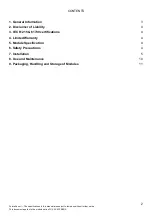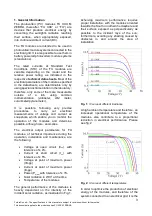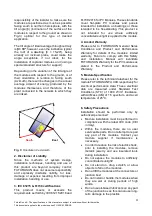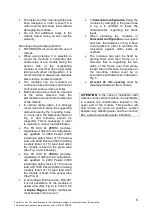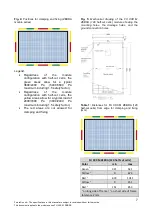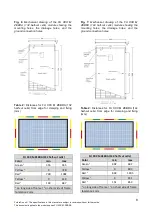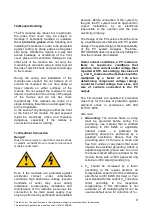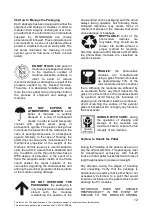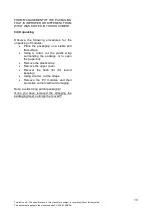
10
FuturaSun srl – The specifications in this manual are subject to revisions without further notice
This document applies to the module series FU XXX M ZEBRA
•
In order to obtain the required electrical
current and/or voltage, the modules can be
connected in series, in parallel, or in a
combination of both.
o
In the case of series connection, the
Voc is the relevant value when
calculating the total voltage of the
series connection. Do not exceed the
maximum system voltage of 1500 V for
the modules FU XXX M ZEBRA, even
at low temperatures. Always use the
same type and rating of module in one
installation!
o
In the case of parallel connection of
modules or series strings of modules,
fusing may be required.
o
Fusing of the circuit shall be
determined according to the local
environmental
conditions
and
regulations. In no case a FU module
string in a parallel shall be subject to a
total reverse current higher than the Ir
value reported in the datasheet.
•
The voltage of the strings of modules, in
series, when measured at their poles, is
the sum of all the individual voltages of
each module. This total voltage should be
compatible with the range of input voltages
admissible for the inverter to which the
modules are connected.
8. Use and Maintenance
8a) Intended Use
FU modules are designed for use in grid-
connected systems. They are therefore linked
in series/parallel combinations to feed a
dedicated inverter with a DC input and an AC
output of 230V/380V AC - 50Hz to provide
energy to the local electricity grid.
8b) Operational Measurements
The only two electrical parameters of output
from a PV module, measurable with
conventional instrumentation, are the V
oc
and
I
sc
.
When the PV modules are instead connected
in series/parallel configuration to an inverter,
from its display it is possible to read:
•
Operational voltage at maximum
power output (Vmpp) of the string
•
Operational current at maximum power
output (Impp) of the string
From these above values, it is possible to
estimate the voltage at maximum power
(Vmpp) of a module in the string under review
and any non-uniformity in the voltages (Vmpp)
of multiple strings connected to the same
inverter.
From the Impp for the string it is also possible
to verify whether there are obvious differences
between one string and another. When a
uniform condition is detected, it can be
assumed that all the modules are working
properly.
The following measures serve to collect
preliminary information on the operational
status of the PV modules in a PV system.
If there is a need to perform direct
measurements on individual modules using
conventional instrumentation, the following
action should be taken.
To measure the open circuit voltage (V
oc
):
•
Note: even in the presence of an insolation
average of 500 W/m
2
, a module exposed
to the rays of the sun presents at its poles
(+ and –) a V
oc
very close to the nominal
value at STC (as shown in Fig.3).
•
When taking the temperature at which the
module is working at that moment into
account, the open circuit voltage module
(V
ocmod
) will be approximately equal to:
V
ocmod
= V
ocSTC
+ [(T
mod
– 25°C) * Beta ]
Where:
o
V
ocSTC
is the open circuit voltage
measured at STC;
o
Beta is the % variation of V
oc
of a
module per 1 °C
o
25°C is the reference temperature of
STC;
o
In the case of good solar radiation and
at the ambient temperature (T
amb
), one
can estimate the temperature of the
module as follows:
T
mod
= T
amb
+ 30°C
•
Using the calculations above, it is possible
when measuring with a multi-meter, to
verify V
oc
meets the standard shown in the
module datasheet.


